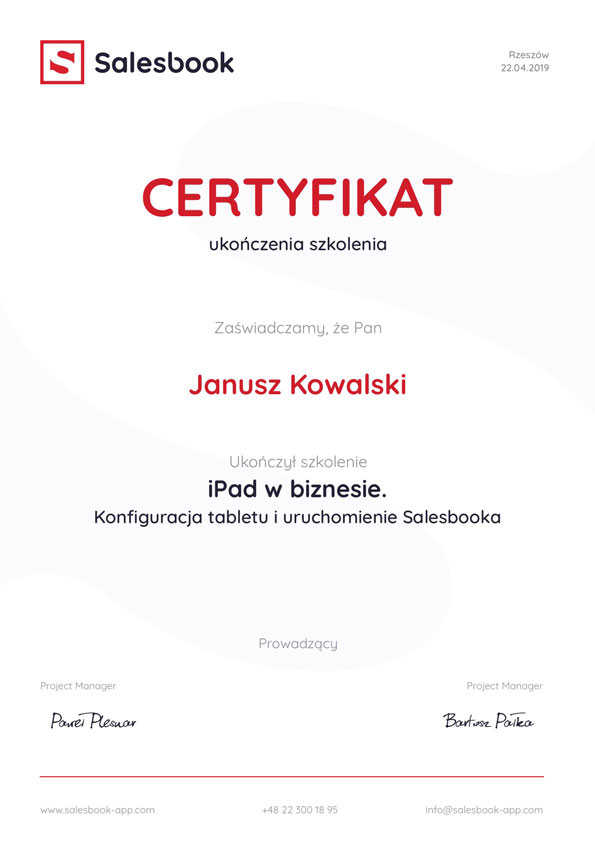

Sales

12 Jun 2023
Only 12% of employees are satisfied with their onboarding process – shows the latest research made by the Gallup Institute. How to prepare a professional onboarding program and use technology to do it? Read about how to automate employee onboarding with Salesbook.
In simple words, onboarding is the process of familiarizing a new hire with an organization. Usually, it takes several days or weeks.
The term onboarding refers to aviation, where it means the procedure of boarding travelers. However, employee onboarding is also used by HR (Human Resources) as the name of the process of welcoming a new person “on the board” of the company, where a new journey begins.
The onboarding process is essential not only for HR and new employees but also for different departments in a company. It engages many people, including a hiring manager, buddy, direct managers, and team members.
An onboarding buddy is a person whose role is to be the strongest support for a new hire and help a new person get acclimated within an organization.
There are many reasons why the employee onboarding process should be thoroughly planned and well-thought-out. Information that an HR manager conveys during a recruitment process must reflect an actual situation in your company.
According to different sources, 33 to 50% of new employees are dissatisfied with their new jobs and change them after six months. One of the reasons for that is disappointment with the onboarding program.

The latest Gallup Institute research shows that only 12% of employees are satisfied with their onboarding process.
At this point, we should ask the question about the beginning of the employee onboarding process. In different sources about onboarding processes, you can find information that onboarding starts before the first day of a new hire and ends when a new employee is utterly independent and supports their team.
Considering the complexity of onboarding, Talya N. Bauer, a researcher and professor at Portland State University created the 4c’ model of onboarding. She explored this topic in her publication “Onboarding New Employees: Maximizing Success”. According to her, there are four stages of the effective onboarding process.
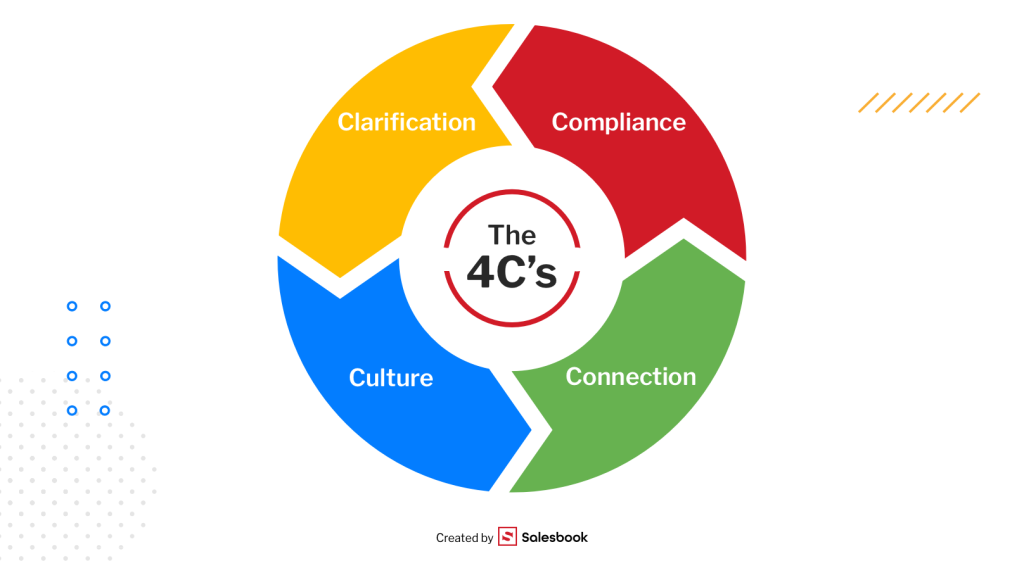
Some sources mention also the stage of pre-boarding as the stage before Compliance and signing a contract with a new hire. It relies on preparation of the workplace, documents by the HR department, (for example, occupational medicine examinations), and giving necessary access to programs or tools.
The onboarding process is described in many sources in terms of the 4c’s model and different strategies applied by HR teams.
The passive onboarding process is when the activities of an HR team are restricted only to basic elements. A new hire is familiarized with documents, procedures, and company policies.
On the other hand, the proactive onboarding process relies not only on giving a new employee the necessary documents but also on defining company culture, meeting co-workers and other employees. We can say that this onboarding strategy takes all elements of the 4C’s model into account.
Talya N. Bauer, the author of the 4C’s model, in her publication “Onboarding New Employees: Maximizing Success” claims that a new hire needs even 90 days to get to know all their duties and be effective.
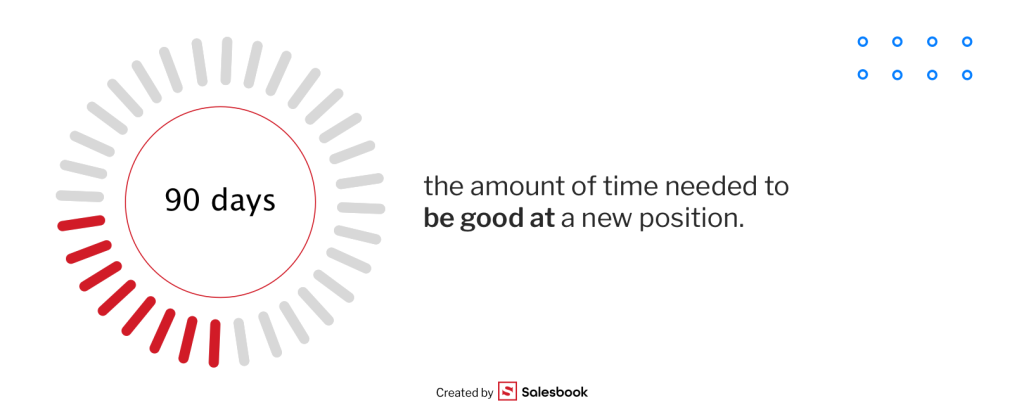
Unfortunately, sometimes onboarding process is far from such standards. For example, research done in Poland (Gamfi, 2021) shows that in 56% of companies, the employee onboarding process usually lasts a week (in the case of 21% of these organizations, new employees get acquainted with the company policies during one day). In 36% of companies, onboarding lasts from 2 to 6 days.
How about the worldwide statistics? According to the data given by BambooHR in 2023, only 37% of businesses claim that their company’s onboarding program last for more than 30 days.
It is surprising in the light of information from the Gallup Institute – a new hire is the most effective after 12 months. Therefore, companies should make the most of that time to prepare a new employee for all tasks and duties. Focusing only on filling in documents and learning about procedures can turn against HR managers.
It is essential for one more reason, many employers do not think about the negative onboarding experience and its consequences. Starting a new job is very stressful and if the employee onboarding process is chaotic, it can be even worse.
Being a new hire is usually associated with stress. New employees are both stressed out and excited to meet other co-workers. In the 60s., Thomas Holmes and Richard Rahe, two psychiatrists examined the stress phenomenon and created a list of the 44 most stressful events in life. It turns out that changing a job ranks in the top twenty.
Since a job change is stressful, HR managers should think over the employee onboarding process and modify it in the entire company. Every wrong decision made by an employer and every negligence can negatively affect the employee retention rate.
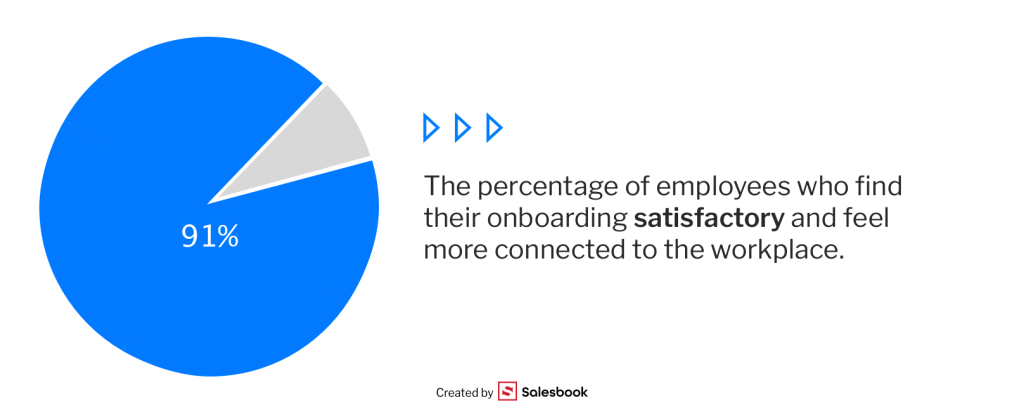
After March 2020, the automation and digitalization of processes have accelerated, which is reflected in trends concerning the organization of work.
The IDC report (“Digital Work Transformation 2021”) shows that 84% of companies around the world plan to increase the digitization of work organization processes. Furthermore, HR departments are interested in automated onboarding processes and their advantages.
Automated employee onboarding allows them to reduce the paperwork and time needed to deal with formal issues.
Why should you choose the automated onboarding process?
Salesbook is both a modern application for an iPad and an administration panel (onboarding software) that allows you to plan professional onboarding.
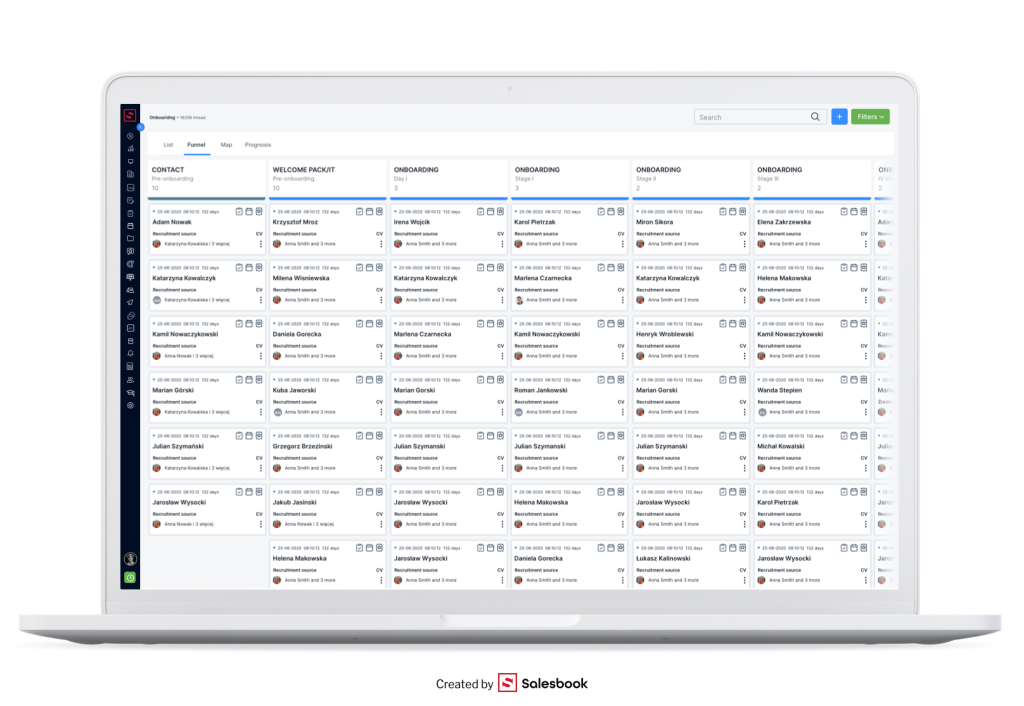
You can start with designing proper communication for new hires. Upload the right documents such as employment contract, confidentiality agreement, form for occupational medicine examinations, or information about benefits.
Thanks to onboarding software, you can send repetitive messages to many new hires at the same time. You can also set a reminder in a system when pre-boarding starts. Just a few clicks are enough to begin the whole process.
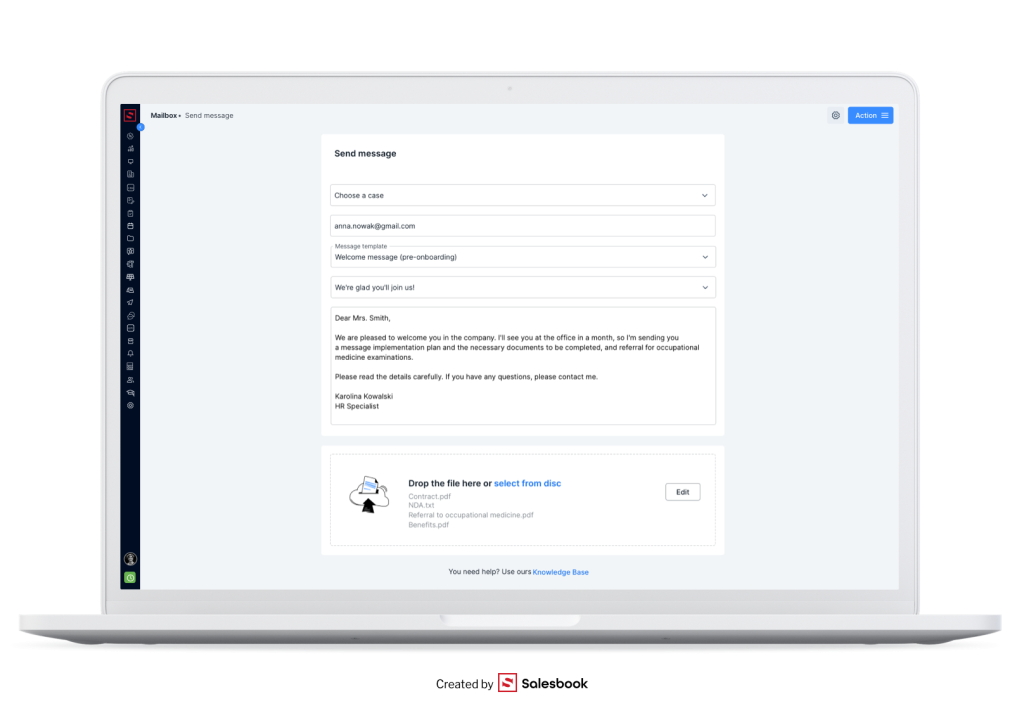
Employee onboarding automation makes it easier for you to send a reminder to managers and a buddy about a new employee. You can mark the names that you choose in a system and send them automated e-mails.
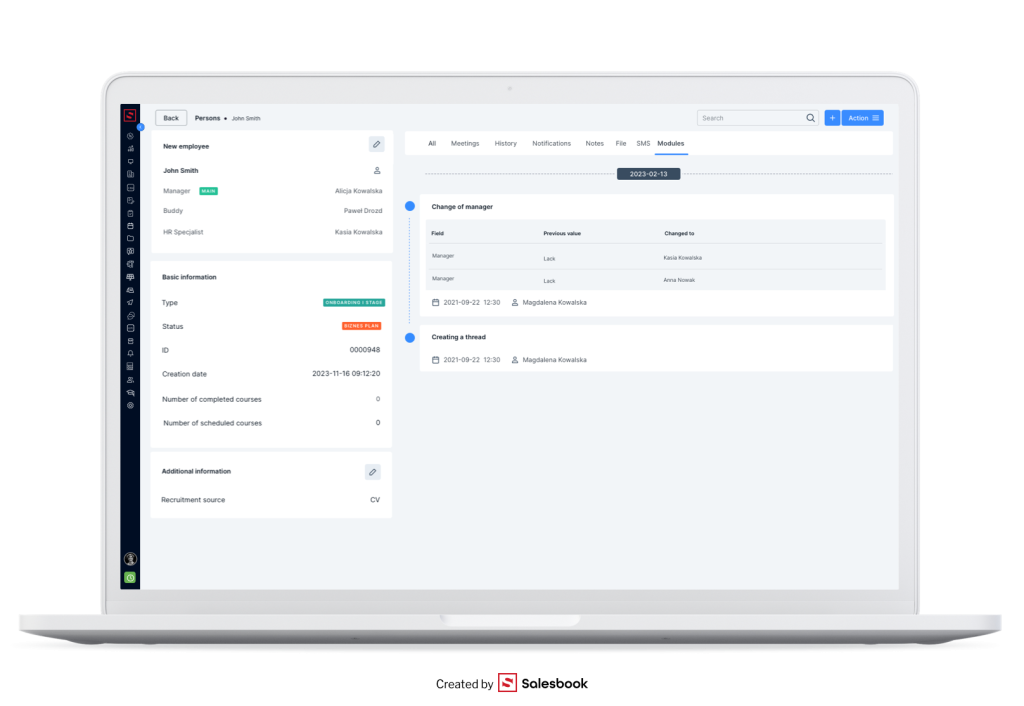
The next step is to order a welcome pack and inform the IT department that a new employee joins the company.
Using an administration panel in Salesbook, you can change an onboarding status if all elements needed in onboarding are complete.
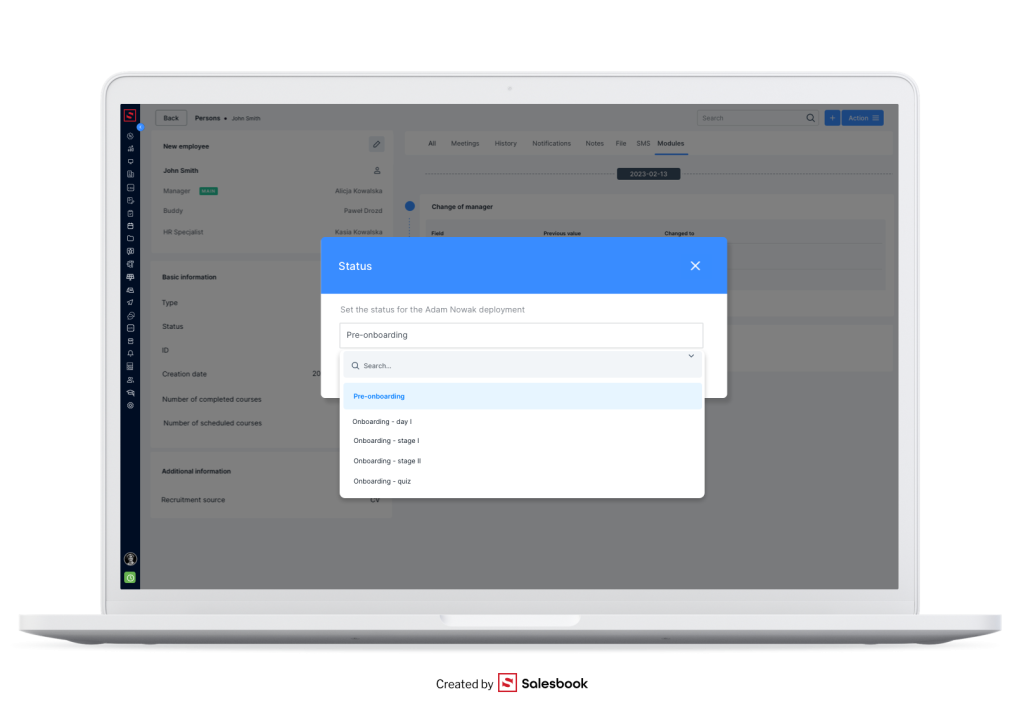
Let us assume that an employee has access to necessary tools and a welcome pack on a desk. The first day is almost planned. Thanks to automation, you can be sure if existing employees know about their new colleague, remember about arranged meetings, or have important information.
How can you use Salesbook?
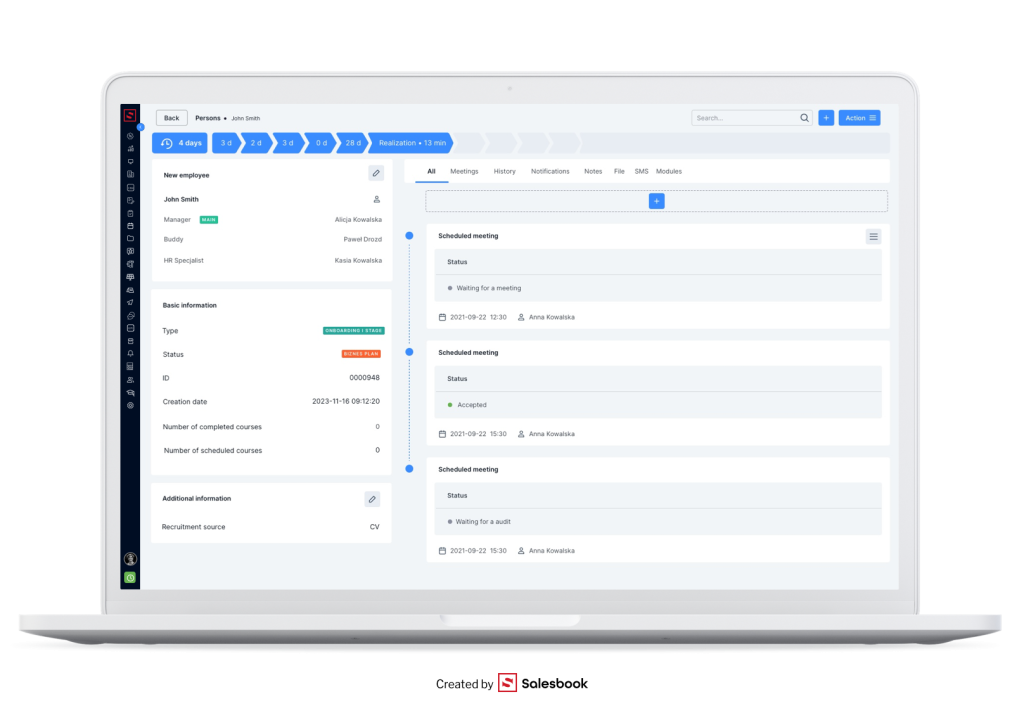
During the first week, you should familiarize an employee with procedures and information about important courses.
It is also a good time for new hires to learn more about the mission, vision, and values of your company. Some CEOs choose to record a professional video and share it with employees.
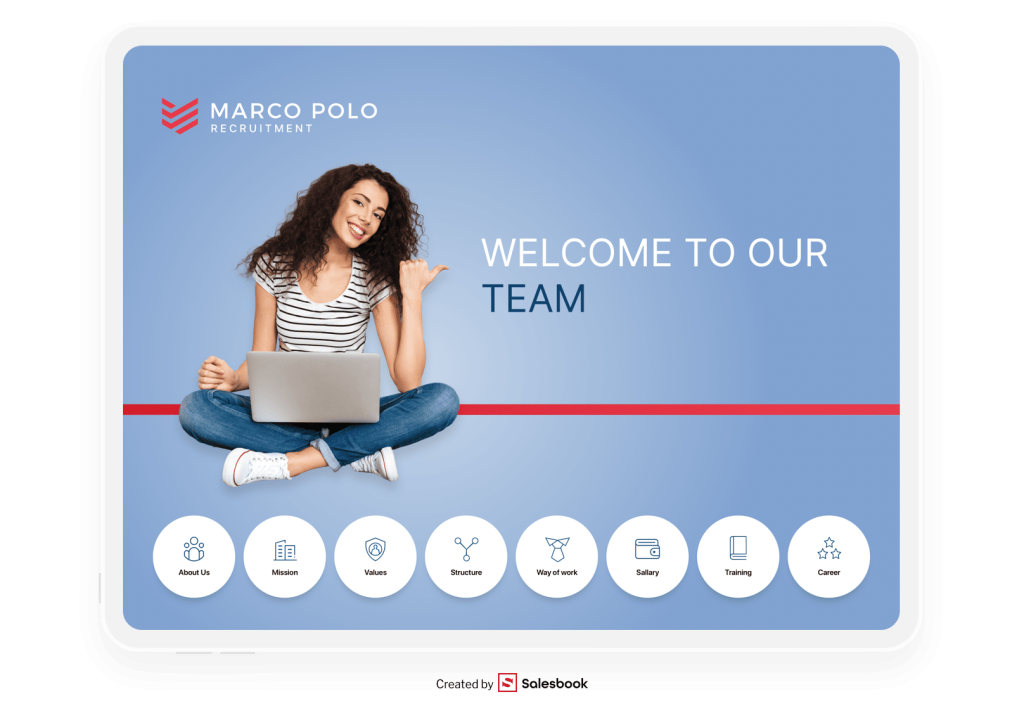
Thanks to Salesbook, you can make your presentation about the company as attractive as possible by uploading videos to the application, adding photos, graphics, visualizations, and personalized text.
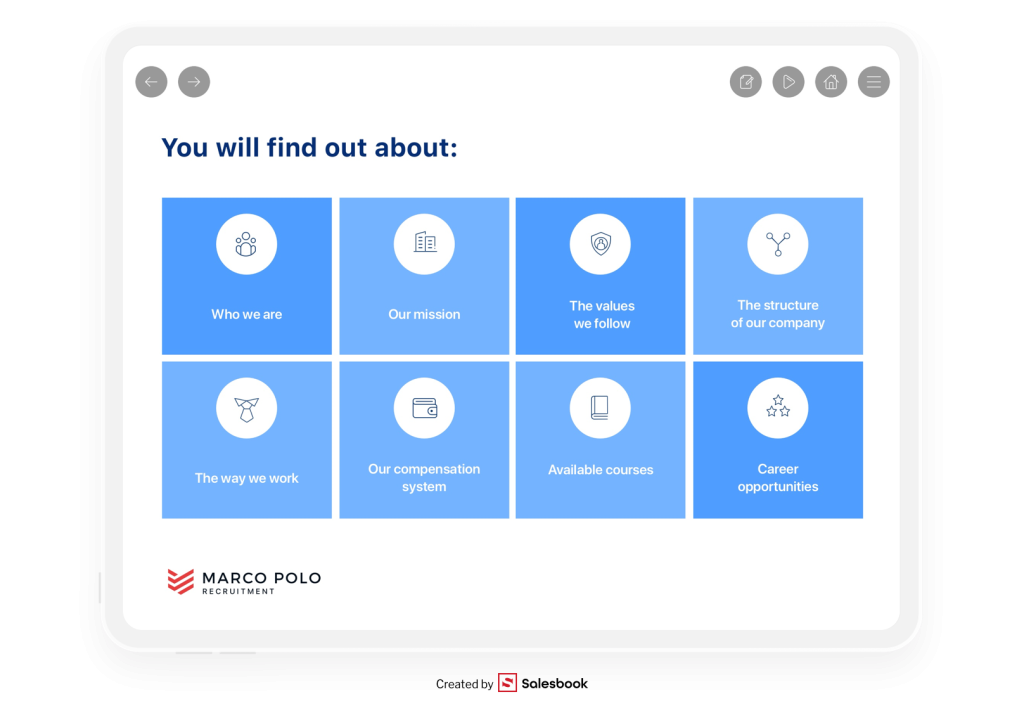
Every time a new hire will read all necessary information in a given section, the HR specialist will be notified.
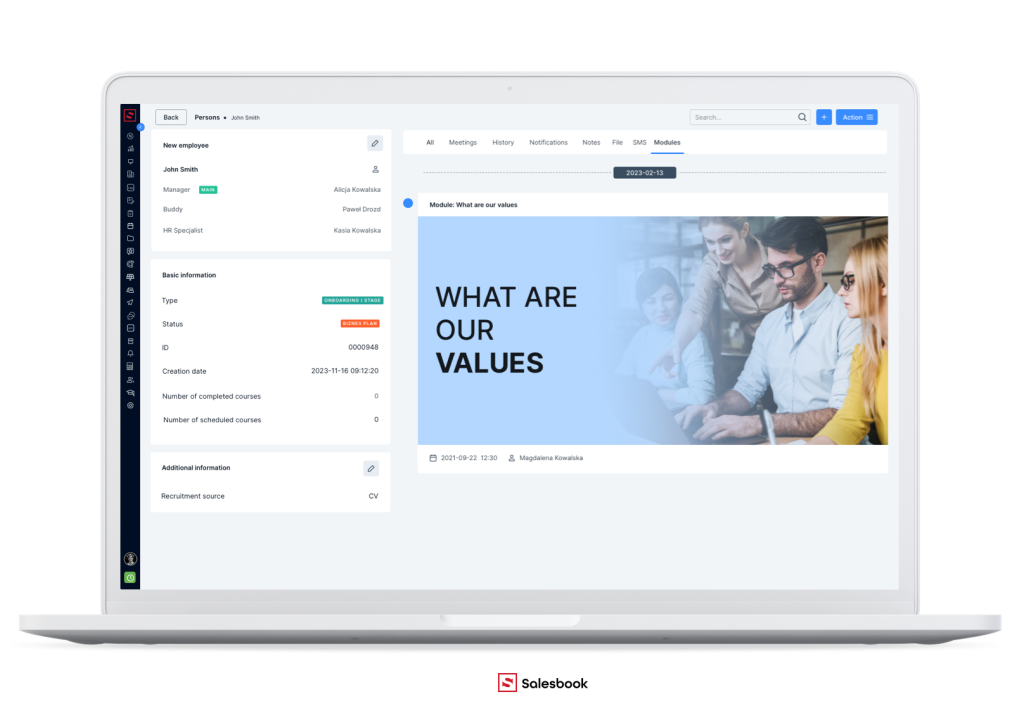
After the part concerning the mission and vision, the new employee should become familiar with the safety rules and anti-discrimination policy.
Obviously, every employee can be overwhelmed with a lot of necessary information. If you want to, you can prepare a FAQ tab.
Before a new person joins the team members, they should know more about their responsibilities and the team’s projects. You can add various personalized materials to Salesbook and improve onboarding.
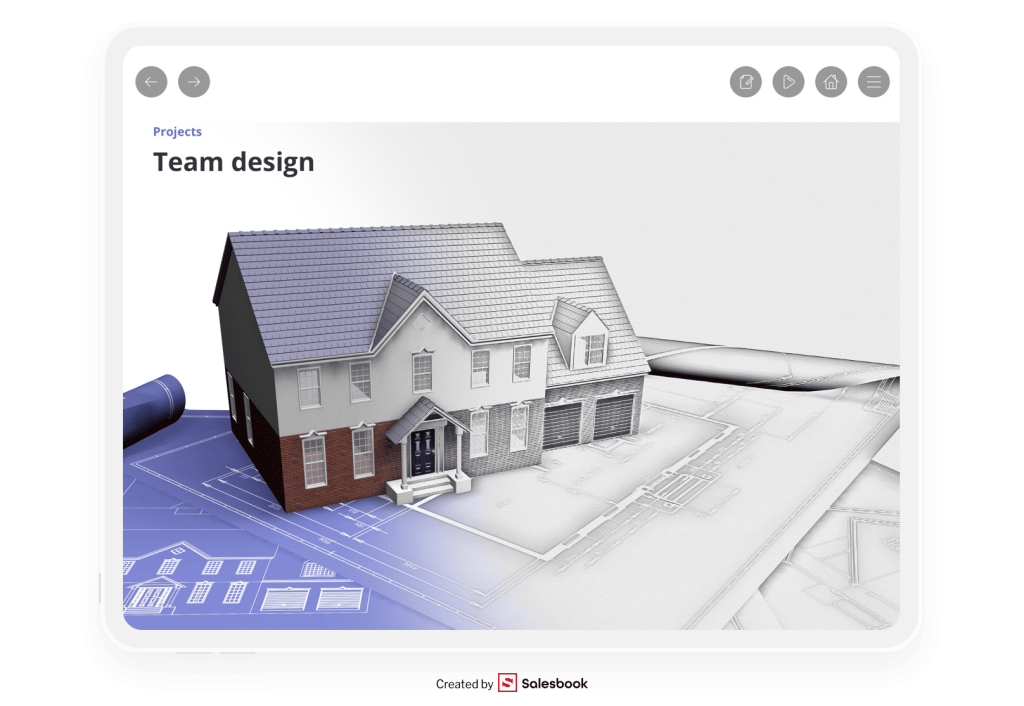
If the last stage of onboarding is about to end, you can plan and send a survey to a new hire. You can ask about impressions and opinions that could help you improve the process.
What can you ask in the survey? Use the following questions:
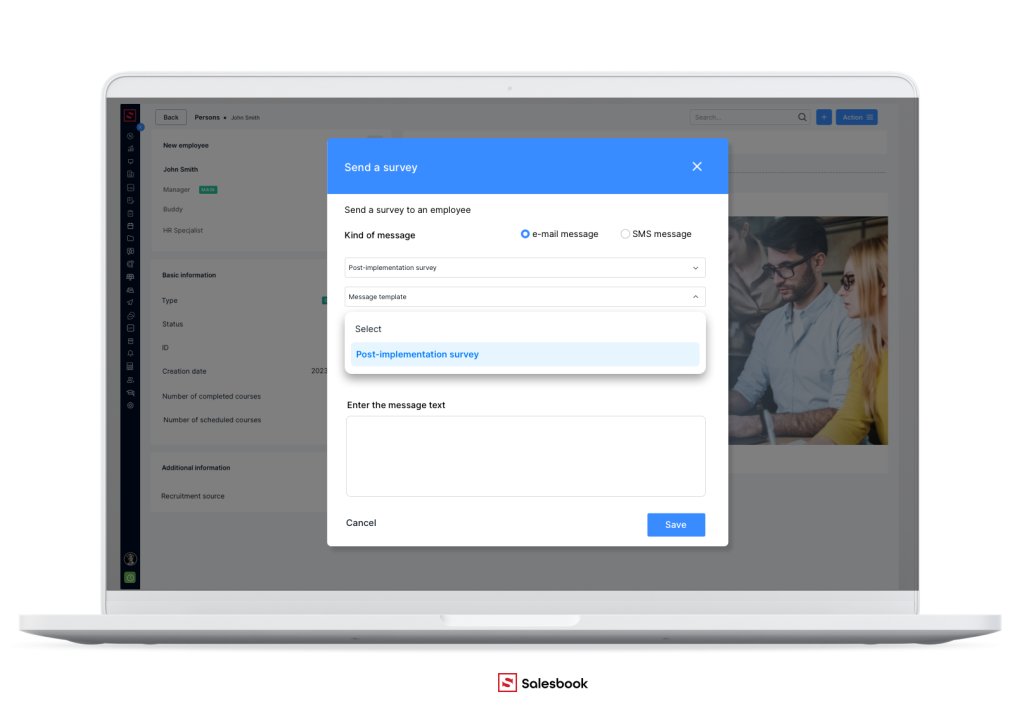
Salesbook is a flexible tool for employee onboarding automation. If you are interested in using it, try our free demo.

Any questions? Feel free to contact us.
+44 203 807 0179
Our Customer Success Team is available from Mon. to Fri. 9am - 5pm CET.
We support inquiries, processes of configuration and use of Salesbook app, as well as billing and technical issues.
